Choosing the right plastic valve is crucial for ensuring optimal performance in industrial applications. This blog post explores the key differences between PVC ball valves and PVDF ball valve. Two of the most commonly used types of plastic ball valve. PVC ball valves are known for their lightweight design, cost-effectiveness, and broad chemical compatibility. It making them ideal for water treatment, irrigation, and general chemical processing. On the other hand, PVDF ball valves offer exceptional chemical resistance, durability, and the ability to withstand higher temperatures. It making them suitable for demanding industries like pharmaceuticals, semiconductors, and advanced chemical processing.
By understanding their material composition, performance characteristics, and cost implications. This guide helps readers make informed decisions when selecting between PVC ball valve and PVDF ball valve for specific applications.
Introduction
Selecting the right plastic valve is crucial for ensuring optimal performance and reliability in various industrial applications. Which is why understanding the differences between PVC ball valve and PVDF ball valve is so important. The choice between these two types of plastic ball valve depends on several key factors. Including material properties, chemical resistance, durability, and application-specific requirements. For instance, PVC ball valves are lightweight, cost-effective, and provide broad chemical compatibility. It making them a popular choice for applications like water treatment, irrigation, and light chemical processes.
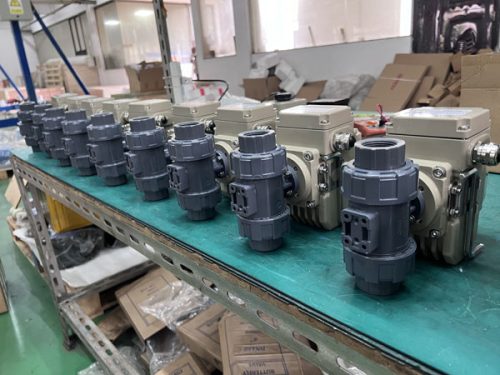
However, in more demanding environments requiring exceptional chemical resistance or the ability to withstand high temperatures, PVDF ball valves offer superior performance. Their advanced properties make them indispensable in industries such as pharmaceuticals, semiconductors, and heavy chemical processing. Where precision and resilience are non-negotiable. Without a clear understanding of these differences, users may risk compromising system performance or overspending on valves that exceed their specific needs. Therefore, making informed decisions based on the unique demands of an application ensures not only efficiency and safety but also long-term cost-effectiveness, reinforcing the importance of choosing the right plastic valve for the task at hand..
Overview of PVC Ball Valve
PVC ball valves are a type of plastic valve widely recognized for their simplicity, versatility, and cost-effectiveness in fluid control systems. Made from polyvinyl chloride (PVC), these valves feature a hollow, pivoting ball that regulates the flow of liquids. Allowing users to open or close the valve instantly or modulate the flow with precision. The material composition of PVC ball valves provides excellent resistance to corrosion, lightweight construction, and compatibility with a broad range of chemicals. It making them a durable and practical option in a variety of scenarios. Their affordability compared to metal valves makes them a go-to choice for industries like water treatment. Where they help manage potable water distribution and wastewater processes.
Additionally, PVC ball valves are extensively use in irrigation systems. As they can efficiently control water flow for agricultural and landscaping purposes. They are also popular in light chemical processing. Thanks to their ability to handle non-extreme chemical solutions without degradation. With ease of installation, straightforward maintenance, and superior reliability, PVC ball valves have earned their reputation as a staple component in many industrial and residential applications that demand efficient and economical fluid control.
Overview of PVDF Ball Valve
PVDF ball valves are a specific type of plastic valve designed to handle demanding applications requiring superior chemical resistance and mechanical strength. Made from polyvinylidene fluoride (PVDF), these valves are known for their exceptional durability and stability under extreme conditions. It making them a preferred choice in industries such as chemical processing, pharmaceuticals, and water treatment. One distinguishing feature of PVDF ball valves is their excellent resistance to a wide range of aggressive chemicals, including strong acids, bases, solvents, and halogens, without risk of degradation. This property is particularly significant in corrosive environments or when precision and reliability are paramount.
Additionally, PVDF offers superior thermal stability. Enabling these plastic ball valves to perform effectively in applications involving elevated temperatures. Their UV resistance further enhances their reliability in outdoor settings. Reducing the risk of material degradation due to prolonged exposure to sunlight. Another standout characteristic of PVDF ball valves is their low permeability, which minimizes the risk of fluid contamination or loss, proving critical in handling high-purity substances. Combined with their lightweight construction, ease of installation, and low maintenance requirements.? PVDF ball valves stand out as a premium solution for tasks requiring both chemical compatibility and structural integrity, setting them apart from more conventional plastic valves such as PVC. This unique blend of properties underscores their indispensable role in industrial applications demanding resilient fluid control systems. Explain PVDF’s superior chemical resistance, durability, and ability to withstand higher temperatures.
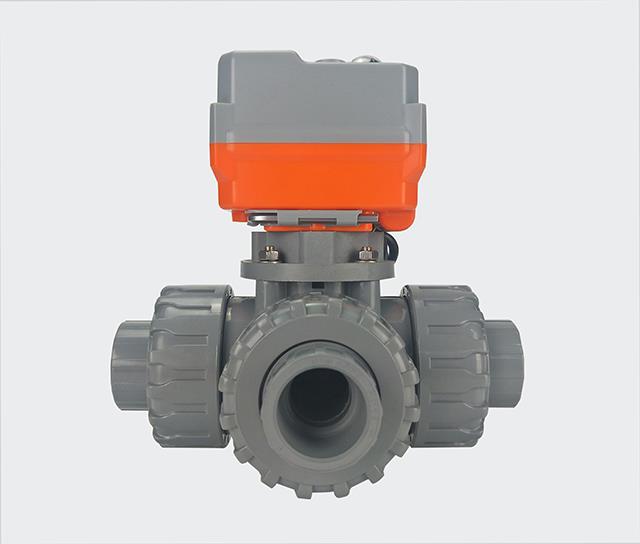
Key Differences Between PVC and PVDF Ball Valve
Material Composition
Polyvinyl chloride (PVC) and polyvinylidene fluoride (PVDF) are two widely use materials in the manufacture of plastic valves. Each offering distinct advantages due to their unique chemical compositions. PVC, a thermoplastic polymer, is characterized by its affordability, lightweight structure, and durability in non-extreme environments. It exhibits excellent resistance to water, diluted acids, and alkalis. Making it ideal for functions like irrigation systems, water treatment, and general fluid control in PVC ball valve. On the other hand, PVDF, a fluoropolymer, possesses a highly crystalline structure that imparts superior chemical resistance, thermal stability, and mechanical strength.
Unlike PVC, PVDF can withstand exposure to highly aggressive chemicals, solvents, and harsh temperatures. Which is why it is often the material of choice for PVDF ball valves in industries such as pharmaceuticals, semiconductors, and chemical processing. Furthermore, PVDF’s low permeability and non-leaching properties ensure greater purity. Making it essential for applications that demand contamination-free processes. While PVC is the go-to material for cost-effective and moderately demanding applications, PVDF stands out for more advanced uses where reliability, resistance, and precision are critical. This differentiation underscores why both PVC and PVDF maintain their prominence in designing versatile plastic ball valves tailored to varied industrial needs.
Performance Characteristics
The distinct compositions of PVC and PVDF significantly influence their performance across varied environmental conditions, shaping their suitability for specific applications. PVC, known for its cost-effectiveness and lightweight nature, performs exceptionally well in non-corrosive and moderately demanding environments. Environments such as residential plumbing, irrigation systems, and water treatment plants favor PVC ball valves due to their ability to resist water, diluted acids, and alkalis without compromising functionality. However, its limitations become evident in extreme conditions. Such as exposure to high temperatures or aggressive chemicals, where degradation or deformation can occur.
Conversely, PVDF’s fluoropolymer composition ensures superior durability in challenging surroundings. Their excellent thermal stability and high chemical resistance enable PVDF ball valves to manage critical operations in environmental extremes. Such as handling caustic substances in chemical plants or ultra-pure water in semiconductor fabrication. PVDF also resists UV degradation, making it ideal for outdoor applications exposed to prolonged sunlight. Furthermore, its low permeability prevents fluid contamination. Which is pivotal in pharmaceutical production and industries demanding sterility. While PVC’s affordability and moderate resistance are well-suited for general-purpose fluid control, PVDF excels in high-stakes environments that require resilience, purity, and long-term performance. These tailored advantages of each material ensure that both plastic valves find relevance in distinctly different industrial scenarios.
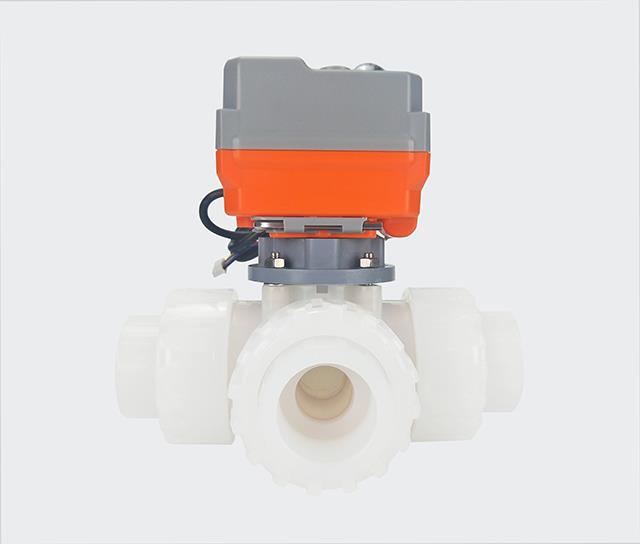
Applications
PVC ball valves and PVDF ball valves serve distinct roles across industries, each excelling in specific applications due to their unique material properties. PVC ball valves are widely utilized in industries such as water treatment, agriculture, and residential plumbing, where their affordability, lightweight structure, and resistance to water and diluted chemicals make them ideal for everyday fluid control needs. These plastic valves are particularly prominent in irrigation systems. As they offer an economical solution for managing water flow efficiently. However, their limitations in handling extreme temperatures or highly corrosive substances restrict their use in more rigorous conditions. On the other hand, PVDF ball valves are engineered for demanding industrial environments where precision, durability, and resistance to harsh chemicals are essential. They dominate industries such as pharmaceuticals, semiconductors, and chemical processing.
Their ability to withstand aggressive chemicals, high pressures, and temperature variations makes them indispensable in operations like ultra-pure water systems for semiconductor manufacturing or corrosive fluid handling in chemical plants. Additionally, PVDF’s low permeability and non-leaching properties ensure maximum purity. Which is a critical factor in pharmaceutical applications. While PVC ball valves cater to cost-effective, general-purpose needs, PVDF ball valves are chosen for high-stakes, specialized environments. Together, these versatile plastic ball valves address a wide range of industrial challenges, ensuring optimal performance and reliability tailored to their respective domains.
Cost and Availability
When examining the cost differences between PVC and PVDF materials, it becomes clear how these disparities directly influence project budgets and decision-making in various industries. PVC, being one of the most cost-effective thermoplastics, is often chosen for projects that prioritize affordability while maintaining sufficient performance for moderate environments. This makes PVC ball valves an economical choice for applications such as residential plumbing, irrigation systems, and basic water treatment processes. Where exposure to harsh chemicals or extreme temperatures is minimal. The lower price point of PVC materials allows industries to scale operations cost-effectively for non-critical fluid control tasks.
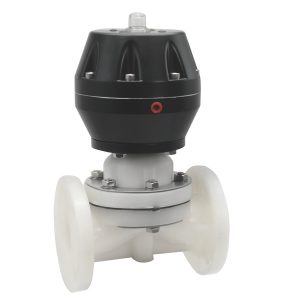
Conversely, PVDF comes at a significantly higher cost due to its advanced fluoropolymer structure and superior properties, including outstanding chemical resistance, thermal stability, and purity. While the expense of PVDF ball valves might elevate initial project costs, their durability and ability to perform under the most demanding conditions often result in long-term savings by minimizing maintenance, replacements, and potential downtime. For industries like pharmaceuticals, semiconductors, and chemical processing, where uncompromised performance and reliability are non-negotiable, the higher investment in PVDF is justifiable. Ultimately, project budgets must weigh the trade-offs between PVC’s affordability and PVDF’s advanced capabilities, ensuring financial resources are allocated wisely without compromising operational integrity.
How to Choose the Right Plastic Ball Valve
Selecting the appropriate valve material, whether PVC ball valves or PVDF ball valves, requires careful consideration of industry demands, application specifics, and budget constraints. For industries with moderate chemical exposure and temperature ranges, such as agriculture, residential plumbing, or water treatment, PVC ball valves are often the ideal choice. Their cost-effectiveness, lightweight structure, and resistance to diluted chemicals make them highly practical for non-critical fluid control applications. However, industries requiring valves to endure aggressive chemicals, high pressure, extreme temperatures, or demanding sterility standards should prioritize PVDF ball valves, despite their higher initial cost. Applications in the pharmaceutical, semiconductor, or chemical processing fields necessitate PVDF’s exceptional chemical resistance, thermal stability, and non-leaching properties to ensure purity and operational reliability. Beyond material performance, budget considerations also play a pivotal role. While PVC valves help manage costs for large-scale projects with basic requirements, PVDF valves, although more expensive, often reduce long-term expenses linked to maintenance or valve replacements by excelling under extreme conditions. To make the best choice, decision-makers must evaluate the specific environmental challenges of their operations, the criticality of the application, and the overall financial strategy. It ensuring the valve selected balances functionality, durability, and cost efficiency effectively.
FAQs:
1. What sizes are available for PVDF or PVC ball valves?
PVDF? or PVC ball valves are available in a range of sizes, typically starting from 1/2 inch (DN15) up to 4 inches (DN100). Custom sizing may be available depending on the manufacturer.
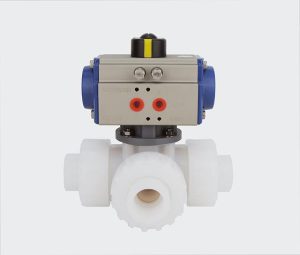
2. What are the primary maintenance requirements for PVDF or PVC Ball Valves?
To maintain optimal performance, routine checks should include:
Inspecting for wear or damage on the ball, seat, and seals.
Ensuring the valve handle operates smoothly.
Checking for leaks around connection points.
If any components show significant wear or degradation, replace them according to the manufacturer’s recommendations.
3. Are PVDF ball valves suitable for high-pressure systems?
Yes, PVDF ball valves are designed to handle moderate to high-pressure systems, with pressure ratings typically varying between 10 and 16 bar depending on the valve’s design and size.
4. What certifications do PVDF Ball Valves comply with?
PVDF Ball Valves often meet industry-specific certifications such as ISO, FDA, NSF, or RoHS compliance, depending on the manufacturer. Check with your supplier for detailed certification documentation for traceability and quality verification.
Conclusion
PVC (Polyvinyl Chloride) ball valves and PVDF (Polyvinylidene Fluoride) ball valves differ significantly in material properties. It making them suited for distinct applications. PVC ball valves are lightweight, cost-effective, and widely used in low-pressure systems. Particularly in water distribution, irrigation, and general plumbing. Their chemical resistance is sufficient for handling a range of acids, alkalis, and salts, but they are less suited for highly aggressive or high-temperature environments due to moderate thermal stability and chemical resilience.
In contrast, PVDF ball valves excel in durability and chemical resistance, standing up to highly corrosive substances, high-purity chemicals, and demanding industrial processes. PVDF’s higher density and superior strength allow it to perform reliably under more extreme temperatures, pressures, and caustic chemical exposure compared to PVC. This makes PVDF the material of choice in sectors like chemical processing, pharmaceutical manufacturing, and semiconductor production. However, this advanced performance comes at a significantly higher cost than PVC valves. Ultimately, the decision between PVC and PVDF ball valves hinges on operational requirements. Including temperature, pressure conditions, and the chemical nature of the fluid being handled.
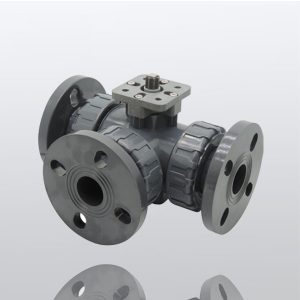
Selecting the appropriate plastic valve for a specific application is a critical decision that directly affects system performance, operational safety, and long-term cost efficiency. Each valve type is engineered to meet distinct requirements. And choosing the wrong one can lead to catastrophic failures, including leaks, contamination, or system malfunctions. Factors like chemical compatibility, pressure ratings, and temperature tolerances must be meticulously evaluate to ensure the valve can handle the conditions it will face without degradation or loss of integrity.

